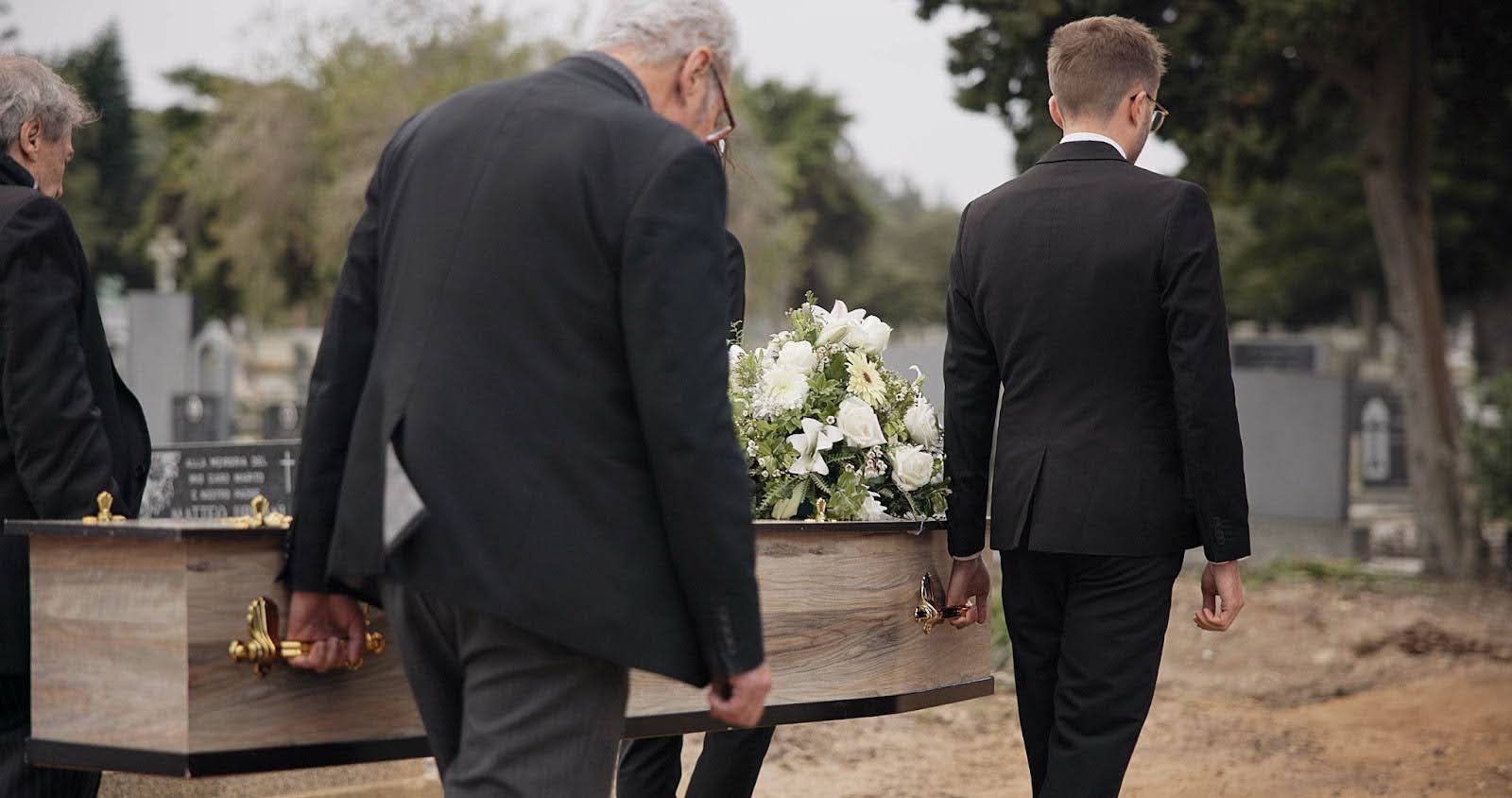What is a Pallbearer and What Do They Do?

Serving as a pallbearer is one of the most honored roles at a funeral. Traditionally, a pallbearer is responsible for escorting or carrying the casket during the funeral procession. If you are wondering what a pallbearer does, their role symbolizes support, respect, and final companionship for the person who has passed away. If you have ever wondered what a pallbearer is, it is someone chosen to physically and emotionally help guide a loved one on their final journey.
The role of a pallbearer carries deep historical and cultural significance. In many traditions, being asked to carry the casket is a final act of service and love, offering a powerful way for friends or family members to show respect and say goodbye.
It is a common misconception that pallbearers must be physically strong. Many modern funeral services use rolling carts to assist with moving the casket, and in some cases, pallbearers are there to walk alongside the casket rather than lift it. The specific role of pallbearers often depends on the type of service. To understand how different ceremonies might handle this tradition, visit our guide on types of funerals.
Accepting the responsibility of being a pallbearer is a meaningful way to honor a loved one, but it is always acceptable to decline the role if someone feels they are not able to fulfill it.
Pallbearer Responsibilities
Serving as a pallbearer is not only a sign of respect but also an important responsibility. People who carry coffins provide both practical support and emotional symbolism during a funeral service. Knowing what is expected ahead of time can help pallbearers feel more prepared and confident in their role.
1. Before the Funeral
Several responsibilities may take place before the service begins:
- Pallbearers are typically notified by the family or the funeral director and asked to accept the role.
- It is important to understand the duties involved, including whether they will be carrying the casket or serving as an honorary pallbearer, walking alongside without lifting.
- Pallbearers should dress appropriately, usually in formal or dark clothing, unless otherwise instructed by the family.
If you are helping arrange a service and need guidance on the planning process, our resource on funeral home services explains how funeral directors assist with organizing pallbearers and other logistics.
2. During the Funeral
At the service itself, pallbearer responsibilities typically include:
- Escorting the casket into the venue at the beginning of the ceremony.
- Carrying the casket during processions, either into the service location or to the gravesite. If you are wondering who carries the casket, it is the pallbearers who are entrusted with this important duty.
- If serving as an honorary pallbearer, standing or walking beside the casket to show symbolic support without the physical task of lifting.
Clear coordination with the funeral director helps ensure everything proceeds respectfully and smoothly.
3. After the Service
After the formal service concludes, pallbearers may still have a few final responsibilities:
- Assisting with the final placement of the casket at the gravesite.
- Taking a moment to offer personal condolences to the family members.
- Remaining available if the funeral director or family requests additional help with closing activities.
By fulfilling these duties with care and respect, pallbearers play an important role in honoring the deceased and supporting grieving loved ones.
Who Should Be Pallbearers?
Choosing who should be pallbearers is an important decision that reflects the closeness and significance of relationships with the deceased. Pallbearers are usually family members or close friends who shared a meaningful connection and are willing and able to participate in the service.
Serving as a pallbearer is both an honor and a responsibility. It offers a chance to show love, loyalty, and respect one final time by accompanying the casket on its journey.
How Do You Pick Pallbearers?
When selecting pallbearers, consider individuals who had a strong relationship with the deceased and who are emotionally prepared to take part. Common choices include:
- Immediate family members, such as siblings, children, or grandchildren
- Close friends or longtime colleagues
- Religious leaders, mentors, or community figures if the deceased had few living family members
If you are asking how to be a pallbearer, it starts with accepting the invitation with humility and understanding the symbolic importance of the role. Physical strength is helpful but not always necessary, depending on the funeral setup.
Who Should Not Be a Pallbearer?
Some individuals may not be the best choice for this role, and that is perfectly okay:
- Those who are physically unable to help carry the casket safely
- People who are likely to become emotionally overwhelmed during the service
In these cases, offering the opportunity to serve as an honorary pallbearer can still include them in a meaningful way. An honorary pallbearer walks beside or behind the casket, providing visible support without the need to lift or carry it. Choosing the right pallbearers helps ensure the funeral runs smoothly and offers a fitting tribute to the person being honored.
How Many Pallbearers Are Needed for a Funeral?
For most traditional funerals, six pallbearers are needed to carry the casket. Caskets are typically designed with three handles on each side, making six people the ideal number to ensure the casket is carried evenly and safely. In some cases, caskets are built with additional handles at the front and back, which allows for eight pallbearers if needed.
The number of pallbearers can also vary based on cultural or religious customs. Some faith traditions may involve more family members walking alongside the casket, while others may focus on symbolic roles rather than physical carrying.
When planning the funeral, it is important to consider both the emotional and physical abilities of those selected. If someone wishes to participate but is unable to lift the casket, they can be included as an honorary pallbearer. Honorary pallbearers walk beside or behind the casket during the procession, providing visible support and paying tribute without the physical burden.
Understanding how many pallbearers you need for a funeral helps ensure the ceremony proceeds smoothly and respectfully.
How to Be a Pallbearer
Being asked to serve as a pallbearer is a great honor, but it also comes with responsibilities. If you have been asked to participate, knowing how to be a pallbearer and understanding basic expectations will help you carry out the role with dignity and respect.
Proper Pallbearer Etiquette
Pallbearers are asked to help create a respectful, orderly atmosphere during the funeral service. Here are key points to remember:
- Arrive early to meet with the funeral director and receive instructions.
- Dress appropriately in formal, dark-colored attire, unless the family has requested otherwise.
- Walk slowly, maintaining a steady pace and staying in step with the other pallbearers.
- Avoid drawing attention to yourself. Serving as a pallbearer is an act of quiet service, and the focus should remain on honoring the deceased.
By following these simple guidelines, you help create a meaningful and respectful tribute for the family and all attendees.
What to Do if You Are Too Emotional to Serve
It is very common to feel overwhelmed by grief, especially when asked to participate in a loved one’s final farewell. If you feel you are unable to serve as a pallbearer, it is perfectly acceptable to decline the role politely.
You might say something like: “Thank you for considering me. I would be honored to be part of the service, but I do not feel emotionally strong enough to carry the casket. I would love to support the family in another way if possible.”
Often, those who decline serving as a pallbearer choose to participate as honorary pallbearers. If you are wondering what is an honorary pallbearer, it refers to someone who walks beside or behind the casket during the procession without the physical responsibility of carrying it. Other important roles, such as delivering a speech, are also available. If you would like to explore meaningful alternatives, you can learn more about speaking roles in our guide to funeral speeches.
Cultural and religious traditions may also guide decisions about who can serve as a pallbearer or in other roles during the service.
Considering Whole Body Donation as an Alternative
For families looking for a meaningful and cost-conscious alternative to traditional funerals, Whole Body Donation offers a powerful option. Donating a loved one’s body to science supports medical research, education, and advances in healthcare while eliminating the financial burden of funeral expenses.
Through our programs at MERI, like Whole Body Donation, families can honor their loved one’s legacy in a way that has a lasting impact. In addition to making a vital contribution to the future of medicine, Whole Body Donation also covers all funeral costs, including transportation, cremation, and the return of ashes to the family. To learn more about how donations can help families both financially and personally, visit our Help with Funeral Costs guide.
Choosing Whole Body Donation is an extraordinary final gift that shapes the future of healthcare while easing the immediate burdens families face. If you are interested in learning more about how to participate, visit our Whole Body Donation Program page to get started.
